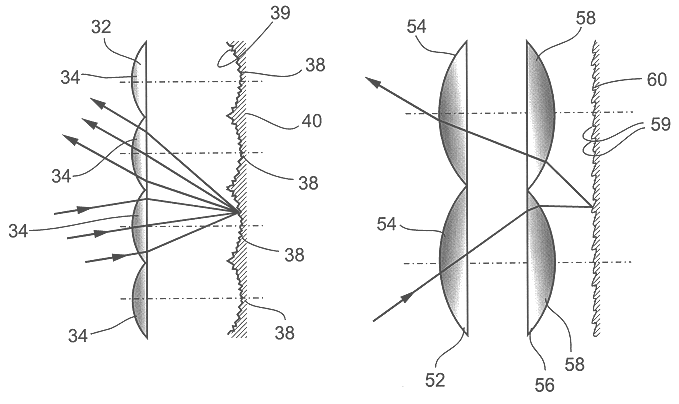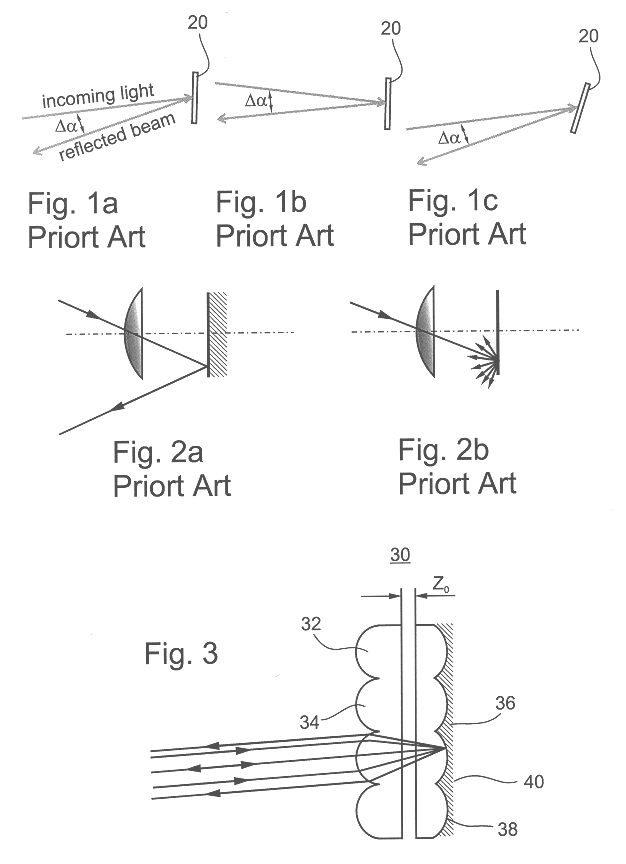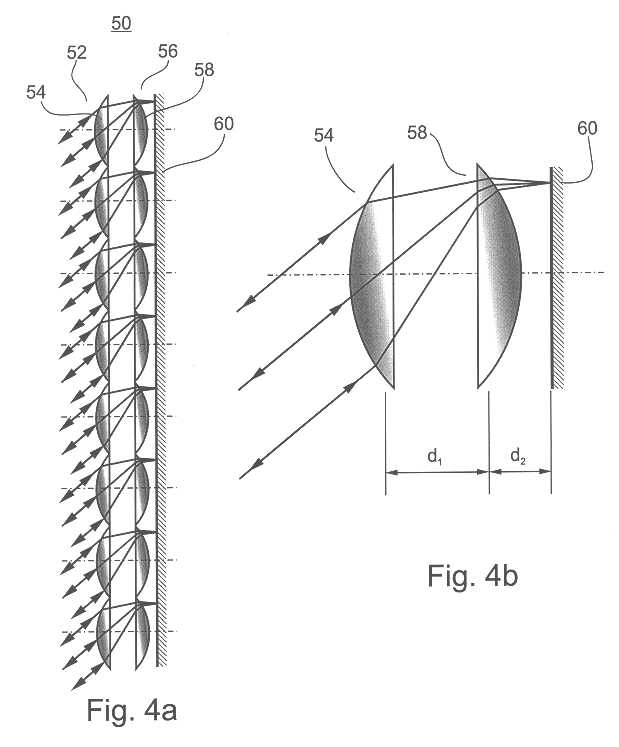Directed reflectors and systems utilizing same
- Summary
- Abstract
- Description
- Claims
- Application Information
AI Technical Summary
Problems solved by technology
Method used
Image
Examples
example 1
Flicker Effect
Flicker, or intermittent reflection, is useful for attracting attention or for transmitting information. Low frequency flicker (0.2 to 10 Hz) is highly noticeable by the human eye and thus can be utilized to attract the attention of motorists and the like. Higher frequencies, 1 KHz and above, can be utilized for communication. Retroreflectors are inherently advantageous for such applications since they do not produce light and as such do not consume energy.
Direction Dependent:
Preferably flickering retroreflectors are entirely passive requiring no power source.
FIG. 10 illustrates a single cell of a multi-cell retroreflector according to any of the embodiments of the present invention described above. A plurality of such cells can be positioned, for example, on a road sign. As a vehicle on the road approaches the road sign, the illuminated point on the reflective layer 60 of the retroreflector moves as the vehicle moves towards the sign, since the angle of incidence on l...
example 2
Reflector Identifier Tags
As described in the prior art (see for example, U.S. Pat. Nos. 5,237,164 and 5,118,930) a simple retroreflector can be utilized as an identification tag. However, such prior art identifier tags suffer from several inherent limitations resultant from the retroreflectors utilized thereby.
Because of its superior light collection and reflection qualities the directed reflector of the present invention can be utilized in an identifier tag which would not suffer from the performance limitations characterizing prior art retroreflector identifier tags.
In general, retroreflector identification systems offer several advantages over other configurations, as follows: (i) simple light can be used for readout; unlike some radio or microwave based devices no potentially harmful radiation is generated or needed; (ii) identification of retroreflector provided codes can be effected from a distance of meters, instead of centimeters as in most other optical devices; and (iii) r...
example 3
Markings
Road Markings:
Retroreflectors are already used in several types of road markings, including traffic signs and lane marking. There are several advantages to using the reflectors of the present invention in road markings.
Since vehicle headlights are typically located lower than the driver's line of sight, retroreflectors are not the optimal solution for sign visibility, particularly for tall vehicles such as trucks. Signs that address truck drivers can benefit from non-retroreflecting directed reflectors, designed for the correct height difference and viewing distance. Directed reflectors can be designed such that a portion of the incident light is retroreflected, while the rest is reflected in an angle different than zero with respect to the incident light.
As already mentioned hereinabove the directed reflectors of the present invention can be designed to produce a flickering reflected light. Flickering light is currently utilized for turn and "hazard" signals in cars, for po...
PUM
 Login to View More
Login to View More Abstract
Description
Claims
Application Information
 Login to View More
Login to View More - R&D
- Intellectual Property
- Life Sciences
- Materials
- Tech Scout
- Unparalleled Data Quality
- Higher Quality Content
- 60% Fewer Hallucinations
Browse by: Latest US Patents, China's latest patents, Technical Efficacy Thesaurus, Application Domain, Technology Topic, Popular Technical Reports.
© 2025 PatSnap. All rights reserved.Legal|Privacy policy|Modern Slavery Act Transparency Statement|Sitemap|About US| Contact US: help@patsnap.com



